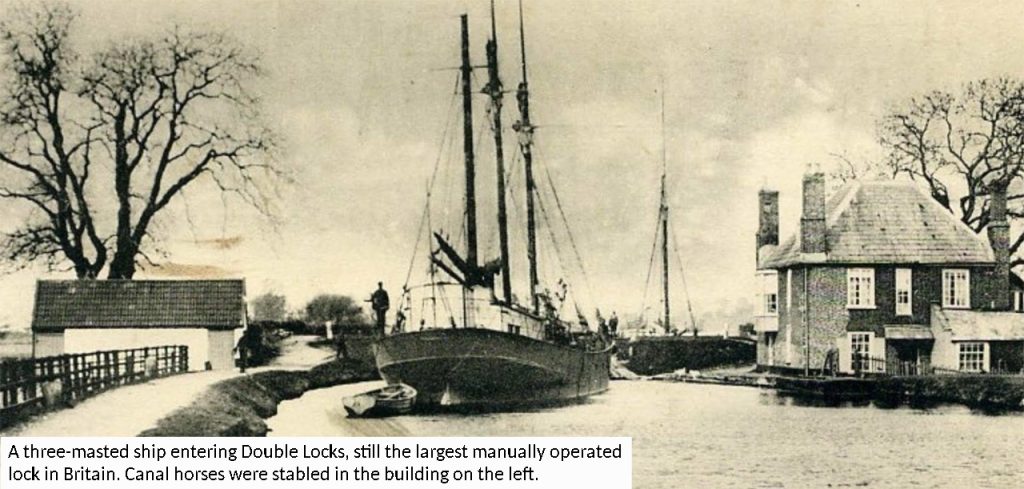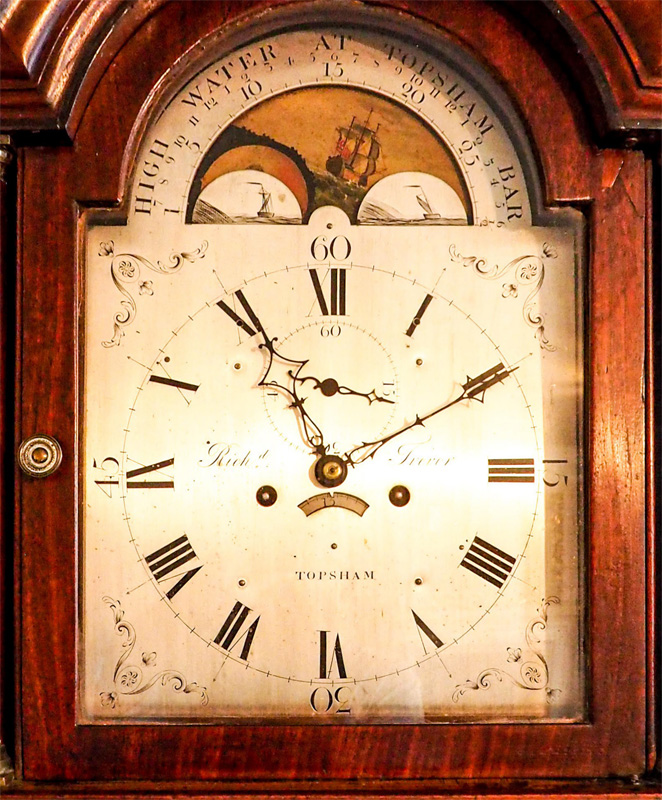
1701: Upgrade to a ship canal
Time and tide ruled merchants’ lives, and they were constantly calculating whether to ship goods from Topsham or use the canal. Exeter City Chamber decided they needed a canal navigable for ocean-going ships.
The city chamber took out loans, local people provided voluntary labour and by 1701 the canal was 15m wide and 3m deep. It was suitable for coasters and small sea-going ships up to 150 tons. The Exeter entrance was upgraded, and the three locks were replaced by one large lock, which also served as a passing place.
Use of the canal increased but foreign trade ships still loaded and unloaded at Topsham. As the roads improved, waggons rather than packhorses could transport goods to the seaport at Topsham. The main users of the canal were coastal colliers bringing coal into the city.


Tide clocks like this one in Topsham Museum allowed merchants to calculate when ships could depart from or arrive at Topsham Quay.